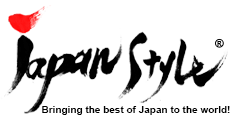Kanji are very interesting characters. Some kanji look like pictorial symbols, and some others look really complicated.
When you break a kanji character apart, you will see that the complicated ones consist of simple parts that have specific meanings or other simplified kanji.
Although we use kanji everyday, we don’t really know how each kanji was formed, so it is fun to learn the origin of the characters; it is like solving secret codes.
Let’s see some examples from a Japanese blog Tui Tui.
This is pronounced “Shin” and means “New.”
The left lower part means “tree.” And with the upper part, the left part means “cutting tree.”
The right part means “axe.”
“Tree that was just cut with an axe” = fresh, brand new
This is pronounced “Nishi” and means “West.”
The origin of this character was hieroglyph for “colander.”
It meant “just like colander allows water to drain, sun that shines fully in the daytime goes down in the west.”
This is pronounced “He” means “Flatulence.”
The center part represents two things line up leaving a little space.
The other part means buttocks.
I guess I don’t need to explain the rest (^_^;)
There 2,136 kanji characters designed for daily use, and each one has its origin.
Learning what each part (radical) means help you to understand or guess meanings of kanji characters. If you have trouble in leaning kanji, break it apart and see what each part means! 😛
Source: Tui Tui
This is JAPAN Style!












![[Photoblog] Mammy-!!](http://www.japanstyle.info/wp-content/uploads/2012/02/20120205_photoblog_mammy-65x65.jpg)

Recent Comments